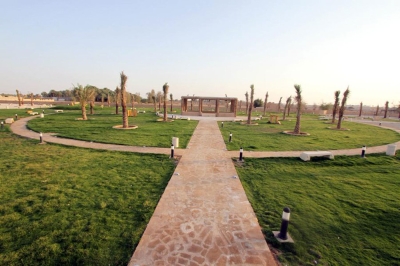
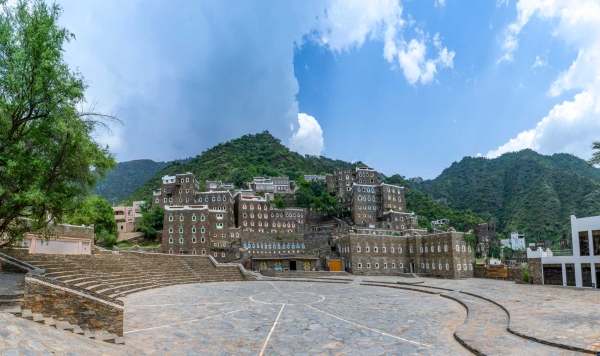
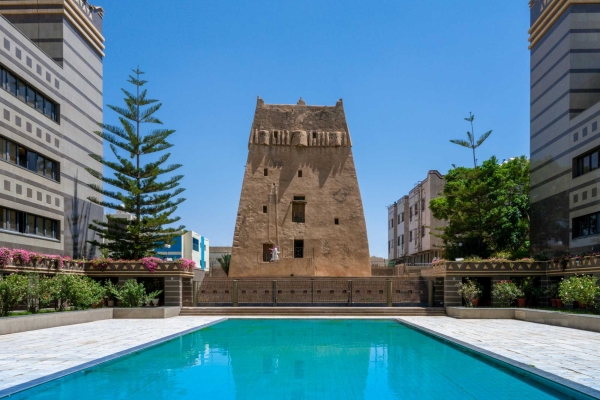
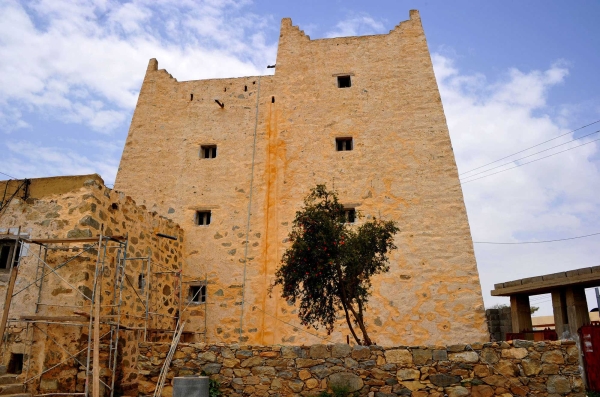
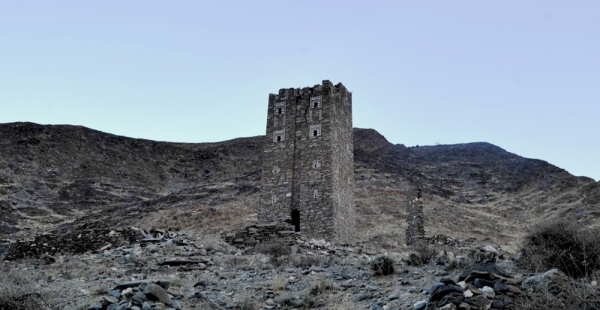
The Antiquities in Aseer Province are the collection of material remains and legacies of ancient human civilizations discovered in Aseer Province, southwest of the Kingdom of Saudi Arabia.
The geological formation of Aseer Province
Aseer Province forms part of the Arabian Shield, with rocks dating back to the Precambrian era. These are igneous and metamorphic rocks, such as granite, basalt, quartz, and schist, along with sedimentary rocks. The province also includes a portion of the Sarawat Mountains range, with peaks exceeding three thousand m above sea level, the highest being Jabal as-Soudah.
The Arabian Shield slopes westward towards the Tihama coast, intersected by several valleys such as Wadi Baysh, Wadi Hali, Atoud Valley, Wadi Bishah, and Wadi Tathlith. The Aseer Plateau occupies the northeastern part of the Province, with a portion of ar-Rub' al-Khali (Empty Quarter) extending into its southeastern part.
Archaeological tools in Aseer Province
A collection of archaeological tools was discovered in Aseer Province, including scrapers, flakes, pointed pieces, bifacial and trifacial tools, rounded tools, cleavers, cutters, and axes dating back to the Acheulean period, found in Wadi Tathlith and Dhahran al-Janub Governorate. These tools resemble materials from the Mousterian period discovered in Bir Hima in Najran Province, including ordinary and pointed stone cores, polished blades, and drills.
In al-Qurha mountainous area, numerous tools made of black volcanic glass, as well as others crafted from quartz and ancient flint, were discovered.
In Tathlith Valley, materials dating back to the Neolithic period were found, made from flint, chert, greenstone, and rhyolite. These included pieces resembling pointed and perforated chisels, fragments of soapstone vessels, arrowheads, and tools similar to those from the same period in the area extending between Jibal as-Soudah and Dhahran al-Janub.
At the archaeological site of Jurash, various pottery styles, different soapstone artifacts, and glass fragments were discovered.
Wadi Wadh, located southeast of Ahad Rufaydah Governorate, is considered one of the sites rich in discoveries of flint stone artifacts. In addition, there are architectural remains, including large stone circles with diameters ranging from three to five m, which possibly represent primitive dwellings dating back to the Neolithic period. The site also features architectural remnants that represent the foundations of stone buildings, scattered among which are large quantities of pottery shards, including parts of bodies, rims, bases, and handles of various vessels.
At al-Murabba site near Ahad Rufaydah Governorate, stone tools were found, including hand axes, blades, and scrapers dating back to the Acheulean period.
Stone and flint tool collections were also found in al-Ajmah Valley, Sha'bah al-Harir, Banu Haif, and al-Safq.
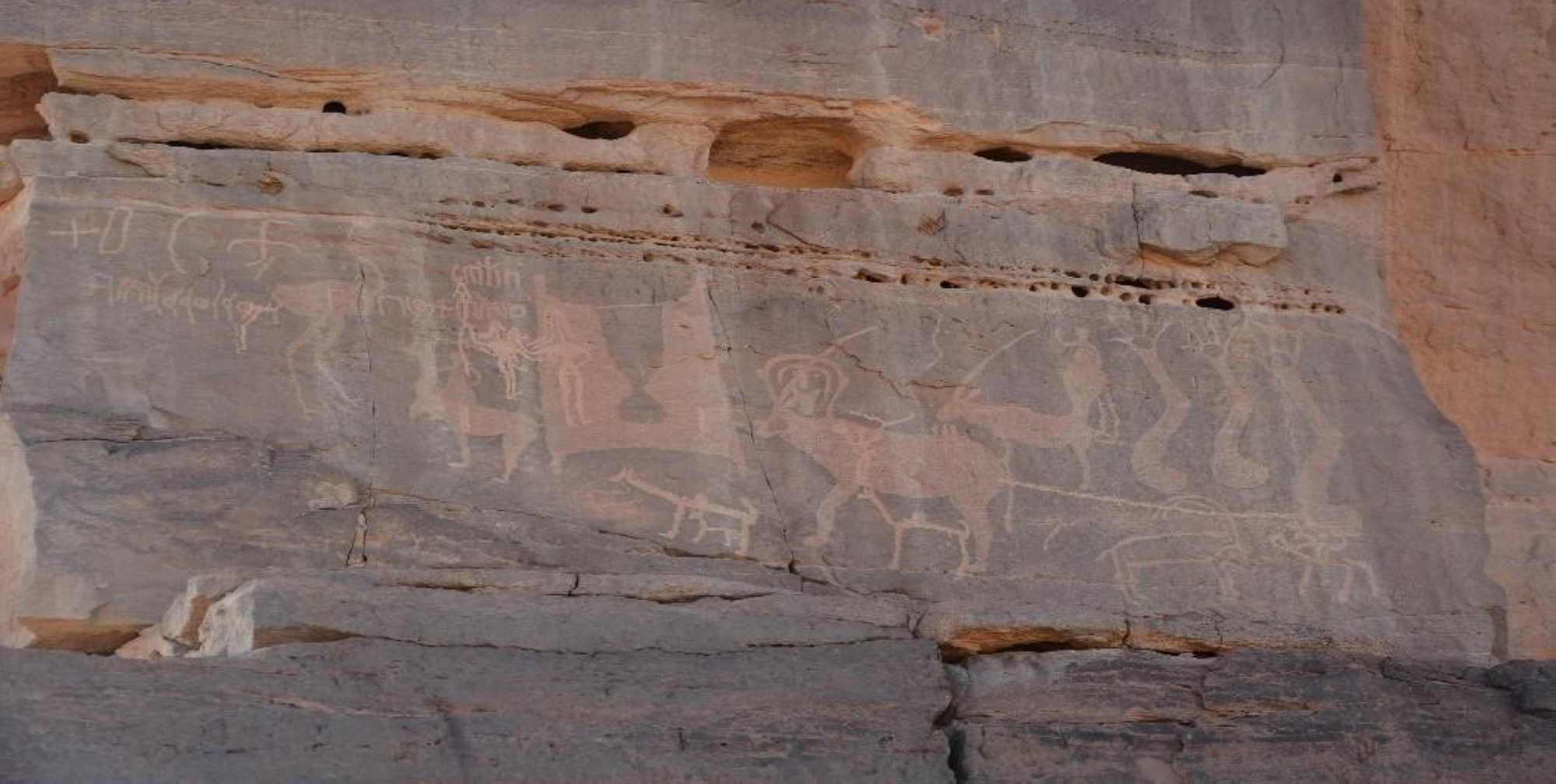
Archaeological villages in Aseer Province
Al-Usran site, located south of Khamis Mushayt Governorate, contains more than thirty circular structures, including a well-crafted wall made of granite boulders that divides the area into two sections. The site also features cairn tombs with clearly defined chambers, some of which have tails, and these are scattered across the highlands of Aseer, Wadi Tathlith, Bishah, and Dhahran al-Janub.
In Turj Valley near an-Namas Governorate, two groups of rectangular tombs were discovered. Some of these tombs consist of two layers, each with an open door, crafted from precisely selected stone slabs. Another set of tombs features a burial pit carved into the rock and roofed with long stone slabs.
In Aseer Province, villages are spread along trade routes, with some dating back to the pre-Islamic period and continuing into the Islamic era. An example is the Jurash site in Ahad Rufaydah Governorate, which contains ruins of buildings reflecting the influences of Arabian Peninsula civilizations. Other notable sites include the remnants of Birk al-Ghimad, with visible traces of their walls still evident today, primitive low-domed tombs, and the site of Dinkan, which retains its cemetery, remains of houses, and a mosque. In Bishah, the ancient Ablah mine, an old market, and several archaeological pools such as Hawtat Matwiyah can be found.
Historical mosques in Aseer Province
Ancient mosques are scattered across several cities and centers in Aseer Province. Among them is al-Thuwailah Mosque in Dhahran al-Janob Governorate and the mosque in the village of Sadr Eid, also known as Sadrid, in an-Namas Governorate, which remains in good condition and features a mihrab dated to 786. Another is al-Asirah Mosque in Banu Amr in an-Namas Governorate, constructed in 806, and an ancient mosque in the village of al-Sahami, west of Dhahran al-Janub Governorate, dating back to 1755. Additionally, an ancient mosque in the old village of al-Harjah, also in Dhahran al-Janub Governorate, contains Islamic decorations on gypsum pieces, with the Shahada (Islamic declaration of faith) inscribed in Diwani script in a raised carving style within two rectangular frames on either side of the entrance.
Rock art and inscriptions in Aseer Province
Humans have inhabited Aseer Province for thousands of years, with rock art and inscriptions being among their activities. Several of these have been discovered in the province, dating back to different periods. Notable examples include the inscriptions of Dhahran al-Janub, the inscription on Jabal Muraighan in Wadi Tathlith in the Sabaean script, which dates to the campaign of Abraha the Abyssinian (al-Ashram) against the tribes of Ma'ad and Banu Amer from Kindah, and the inscriptions on Mount al-Ish in al-Birk Governorate, the inscription on Jabal A'imah in an-Namas Governorate, the Shahdi inscription in Dinkan, the inscription in the Bedouin area of Banu Amr, the inscription in the village of Banu Qushair in an-Namas Governorate, as well as a collection of human and animal rock art and inscriptions in Banu Rizam on Jabal as-Sir, and depictions of gazelles and sheep at the al-Fiyyah site in Tabalah Village.
Historical buildings in Aseer Province
The province contains several forts, castles, and historical palaces, including around ten forts surrounding the Zumrah Village in the Khath'am Center. These forts are constructed from tightly packed stones in a distinctive architectural style, with some rising to more than twenty m.
In Wadi 'Ayyah, one of the valleys in Ballasmar Center, there are several palaces and forts, some of which reach up to five stories high and are adorned with white quartz stones. Additionally, there are numerous circular forts made of stone and mud in the city of Abha and the governorates of Khamis Mushayt, Ahad Rufaydah, and Sarat Ubaidah. Square forts built solely from stone are found in Wadi 'Ayyah, an-Namas, and Balqarn, while stone buildings are present in Rijal Alma', and stone-and-mud structures are located in Ahad Rufaydah and Sarat Ubaidah. Al-Habajiyah site includes an ancient, buried well known as al-Habajiyah Well, and several circular stone structures with diameters ranging from four to six m, constructed from stone slabs and dating back to the late Neolithic period.
At al-Baghbagh site, north of Tathlith Governorate, a variety of ancient tombs were discovered, differing in shape and size. These include circular, square, and more complex forms, with their origins likely dating back to the second and first millennia BCE. On the summit of Jabal Bijad, a collection of circular tombs was found, with some having a diameter of one m and a height of three m. Another type consists of stone mounds with a diameter of approximately one m, connected to tails of accumulated stones, some extending up to forty-five m. These are also believed to date back to the second or first millennia BCE.
At the Shamsan site, several stone tombs were discovered, consisting of large stone heaps with foundations built from stone slabs and walls that still stand today. Scattered throughout the site are fragments of pottery with a red slip, with the stone tools dating back to approximately the third millennium BCE, while the pottery dates to the first millennium BCE. Additionally, at the al-Makhamisah site, some foundations of buildings constructed from stone blocks were found, featuring circular, rectangular, and square shapes. This site is likely dated to the third and second millennia BCE.
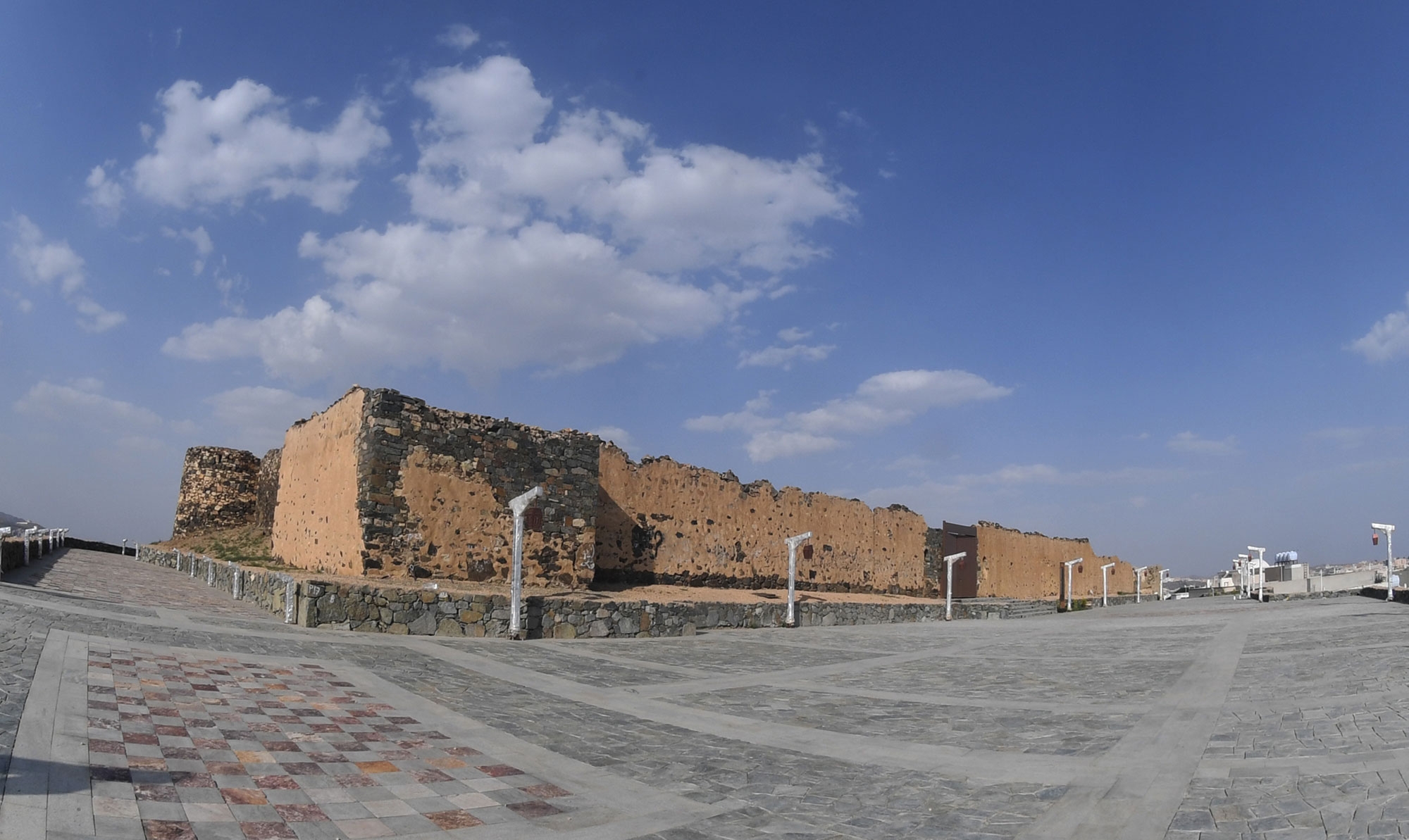
At the base of Jabal Arafa, east of Tathlith Governorate, architectural foundations of buildings, stone circles, and elevated stone heaps are visible, along with an area covered in sand where a large number of pottery shards were discovered. This site dates back to the first millennium BCE. On the summit of Jabal Hamumah, remnants of the foundations of a small building were found, measuring fifteen by ten m. The building was constructed from large boulders, with the gaps between them filled with rubble. The site includes at least three longitudinal rooms, surrounded by brown pottery with a red slip.
Shada Palace is located in the center of Abha City. It was constructed under the direction of the founding King Abdulaziz Bin Abdulrahman Al Saud and was completed in 1929. The palace served as the headquarters for the Emirate of Abha (Aseer Province) at that time. It was restored in 1987 and converted into a museum for traditional artifacts. The palace is considered an outstanding example of traditional architecture in the province, built from stone with walls coated in a layer of gravel both inside and out. It consists of four floors connected by a staircase.
Shamsan Fortress is located northeast of Abha City. It was constructed between 1923 and 1929. The fortress is built from stones with flat surfaces and includes three watchtowers.
The Heritage Village in Rijal Alma Governorate, Aseer Province.
Rijal Alma Governorate is located west of Abha City in Aseer Province and includes the Rijal Heritage Village. The village features buildings constructed closely together from stone and is composed of several neighborhoods, such as Zur, al-Hiyamah, al-Manazir, al-Hifah, al-Kadhah, and Aslah. It served as the capital of the Emirate of Hali during the reign of Musa al-Kanani in 1332. The village consists of a collection of heritage stone forts, with heights ranging from three to seven stories, each story representing a residential unit. Some of its notable forts include Riyadh, Razih, Al Jaber, Al Mismar, and Al Hawat, which functioned as military barracks due to their high fortification. The village also houses a mosque, comprising a shaded area facing the qiblah with a courtyard behind it called "as-Souh," which is roofed on both the eastern and western sides. The mosque includes an annex known as "al-Manazilah," used for holding meetings and hosting pilgrims and visitors. The village's urban layout features narrow streets and wide courtyards.
Related quizzes
Related articles
